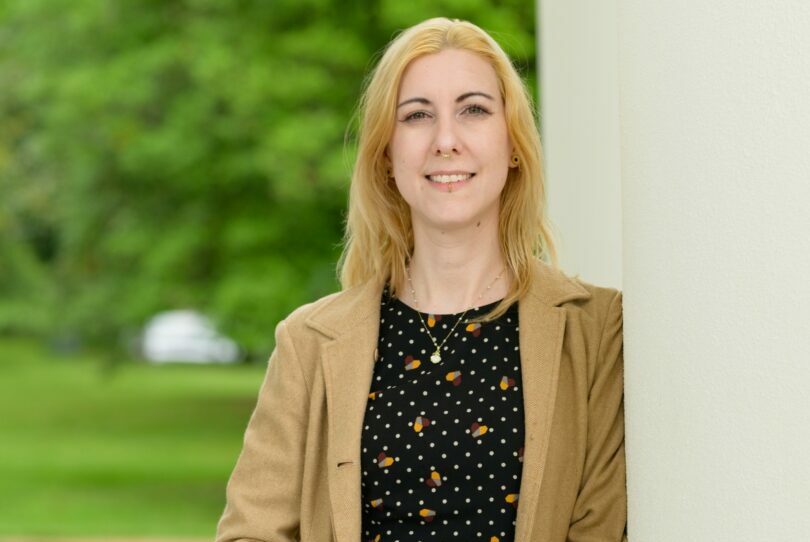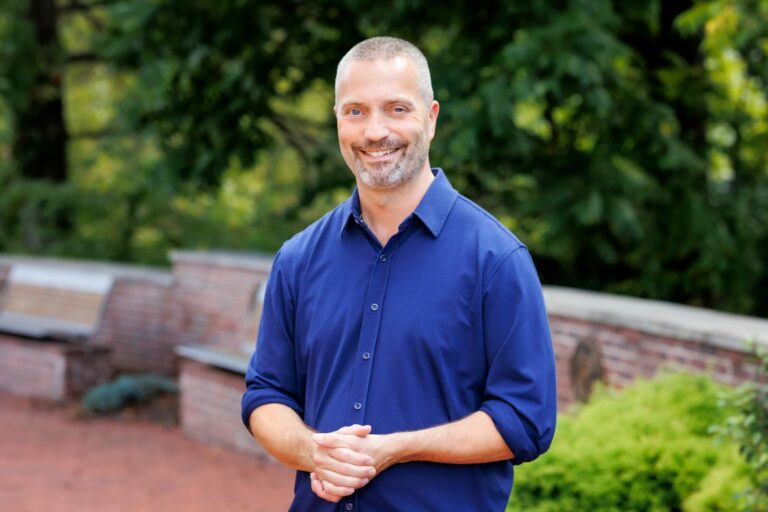Alright – so today we’ve got the honor of introducing you to Maryam Takalou. We think you’ll enjoy our conversation, we’ve shared it below.
Maryam, we’re thrilled to have you sharing your thoughts and lessons with our community. So, for folks who are at a stage in their life or career where they are trying to be more resilient, can you share where you get your resilience from?
For me, resilience comes from the transformative power of art. The mix of planning and improvisation in the creative process constantly surprises me. Even with the best-laid plans, unexpected twists always add something fresh and original to the work. I see those moments as art’s generosity—a reminder of how creativity can inspire me to give back to the world around me. I still wrestle with self-esteem and insecurity, like many others. But practicing art has always been my way of building resilience and staying true to who I am. Growing up in Tehran, art gave me a sense of empowerment in a society where creative expression often had to navigate cultural and social constraints. The support of inspiring artists who showed me what strength and creativity look like and proved that art can thrive, even in tough situations.
Also, a lot of my resilience comes from the strong women in my life, especially my mom, and my own relentless curiosity. They’ve helped me stay connected to myself through art, which has always been my anchor. Sure, there are moments of despair when I feel like giving up, but I’ve learned to ground myself in things that spark my spirit again. For me, resilience isn’t just about pushing through hard times—it’s about evolving, embracing the process, and finding strength in the act of creating.

Thanks, so before we move on maybe you can share a bit more about yourself?
I’m currently pursuing a PhD in Visual and Performing Arts at the University of Texas at Dallas, alongside teaching Foundation Art courses. Balancing life as an artist and educator is both challenging and rewarding, filled with moments of vulnerability, curiosity, and growth. For me, art isn’t just a profession—it’s a way of being, a continuous rhythm that connects creation and contemplation. It’s a grounding force that keeps me curious and playful, almost like a child discovering the world. Looking back, I can see how this process has had a transformative power throughout my life.
Displacement has profoundly shaped the works of many diaspora artists, writers, and thinkers in unique ways. The mass migrations during World War II offer compelling examples of how creatives navigated trauma, loss, and reinvention. Marcel Duchamp and Walter Benjamin, for instance, represent contrasting responses to exile and its impact on their practices.
Walter Benjamin, quoting Nietzsche during his exile in 1939, wrote: “This seeking for my home… was my affliction. Where is my home? I ask and seek and have sought for it; I have not found it.” His words capture the anguish and sense of dislocation that marked his experience. In contrast, Marcel Duchamp, while in exile in 1940, wrote on a postcard to Walter Arensberg: “I have gone home… affectionately, Marcel.” These simple yet poignant words reflect a more adaptive approach to displacement. Regardless of which one was better or not, my point is about
differing responses highlight how exile can shape creativity in dramatically different ways.
Displacement has been a complicated journey for me. When I left Iran to pursue my MFA in Florida and later my PhD in Texas, it felt like starting over from scratch—no connections, a tight budget, and the constant challenge of a new language.
In those early years, my work centered on personal identity, relationships, and the restrictions I grew up with—government mandates, the hijab, and societal pressures. Over time, I’ve noticed a shift—a quiet freedom from the need to frame or define myself in any fixed way or space. It’s like a healing process through making and discovering. Though vulnerability and fear persist, especially as a woman, I’ve come to see art as a transformative tool to offer generously self-regulating and adaptation beyond any words and stories that will let my work talk by itself.
I’m currently working on my dissertation, exploring how landscape and memory function as archives in contemporary art. This research feeds directly into my creative work—through video, installation, sculpture, and other media—allowing me to deepen both my artistic exploration and critical understanding. Drawing inspiration from Persian painting traditions, I challenge the conventional Western linear perspective, offering alternative ways of seeing.
My work repositions traditional forms within Western landscapes, examining how body, memory, and power intersect. By transforming familiar scenes into something strange and thought-provoking—a process known as defamiliarization—I encourage viewers to see landscapes not as static entities but as fluid, constructed experiences. Using emerging technologies, I explore how our surroundings are shaped by perception, inviting audiences to rethink their relationship with space and place.
In Spring 2024, I showcased Positional Status, a video projection and installation, at the SPN Gallery. It was an early prototype exploring two distinct ways of representing “reality”: the positional perspective of Persian painting and the one-point perspective of Western art. In positional perspective (Maghami), figures are sized and placed based on their societal or religious significance—a technique also seen in ancient Egyptian and Mesopotamian art. For this piece, I used positional perspective to position my own body on the gallery floor, framing it within a one-point perspective. This contrast highlights how mathematical illusions shape our understanding of space and the relationships between bodies within it.
Looking ahead, I’m excited to install a new version of this project with large-scale video projections at Grand Park in March 2025. It’s an incredible opportunity to showcase my work in a public outdoor setting and connect with a broader audience.
Beyond my studio practice, I’m also co-organizing the RAW Conference for the Bass School at UTD. I’m passionate about this initiative because it bridges academic and artistic communities, fostering conversations that benefit everyone involved. It’s fulfilling to contribute to spaces that amplify shared creativity and dialogue, extending far beyond personal achievement.

Looking back, what do you think were the three qualities, skills, or areas of knowledge that were most impactful in your journey? What advice do you have for folks who are early in their journey in terms of how they can best develop or improve on these?
My growth as an artist has come from how I navigate moments of failure or frustration. Creativity isn’t about avoiding mistakes; it’s about learning and moving through them. It took me a long time to understand the value of self-expression and feel comfortable sharing my thoughts, accomplishments, failures, and feelings. I’ve also learned to appreciate imperfection—a realization that wasn’t easy. For years, I held myself to rigid expectations, harshly critical of my work. Over time, perseverance helped me recognize patterns rooted in fear and perfectionism. Now, my studio—and even my teaching spaces—have become places where I embrace uncertainty, allowing my work to evolve naturally, free from the pressure of perfection. It’s been liberating and deeply rewarding.
A key part of my journey has been building a routine that supports both my creative and personal growth. I’ve woven reading, singing, watching, and drawing into my daily life—small rituals that keep me grounded and connected to my work, even when inspiration feels out of reach. These habits have strengthened my perseverance and self-motivation, helping me push through slow or uncertain times. Embracing imperfection, building consistent routines, and developing resilience have been the foundation of my artistic journey.

How would you spend the next decade if you somehow knew that it was your last?
Artistic productivity and creativity come with challenges for all artists, regardless of gender, nationality, or experience. Women artists, in particular, often navigate additional systemic barriers and societal norms that demand their constant attention alongside creative development. For any artist, including myself, efficiency relies on factors like financial stability, access to materials and workspace, and a supportive network. These essentials are not always easy to secure, especially for foreign artists who aren’t considered “local.” Gaining gallery representation, for instance, requires effort, connections, and navigating an often exclusive art world. These experiences have taught me that resilience is not only about persistence. It is also about adapting, building relationships, and finding strength in moments of uncertainty. Although the challenges remain, they continue to fuel my passion to grow and create in ways that feel authentic and meaningful.
Contact Info:
- Website: https://takalou.com
- Instagram: Mary_takalou
- Facebook: Maryam Takalou






Image Credits
1. Positional Status / Diagrams: Comparison of one-point perspective (left) and Persian non-linear perspective (center). Persian miniature (right) by Mohammad Hassan Khan Afshar depicting Nasser al-Din Shah, Mozaffar al-Din Mirza, and the Sepahsalar in Mashq Square. (Source: www.malekmuseum.org)
2. Positional Status (2024): SPN Gallery, Texas.
3. Positional Status (2024): Installation and video projection, SPN Gallery, Texas.
4. Studio Projection (2024): Practicing projection on cutout bodies in the artist’s studio.
5. Positional Status (2024): Exhibited at SPN Gallery, Texas.
6. Moveable Body (2022): Installation and video projection with Persian quilt (Chehel Tikeh) made from my mother’s clothes, handmade bricks with clothes and seeds. Exhibited at Mofa Museum, Florida.
7. Moveable Body Series (2022): Artwork from the series. Exhibited at Mofa Museum, Florida.
8. Exploded Net and Pigeons (2022): Artwork from the series. Exhibited at Mofa Museum, Florida.
9. Detail: Close-up of the Exploded Net and Pigeons (2022).
so if you or someone you know deserves recognition please let us know here.




